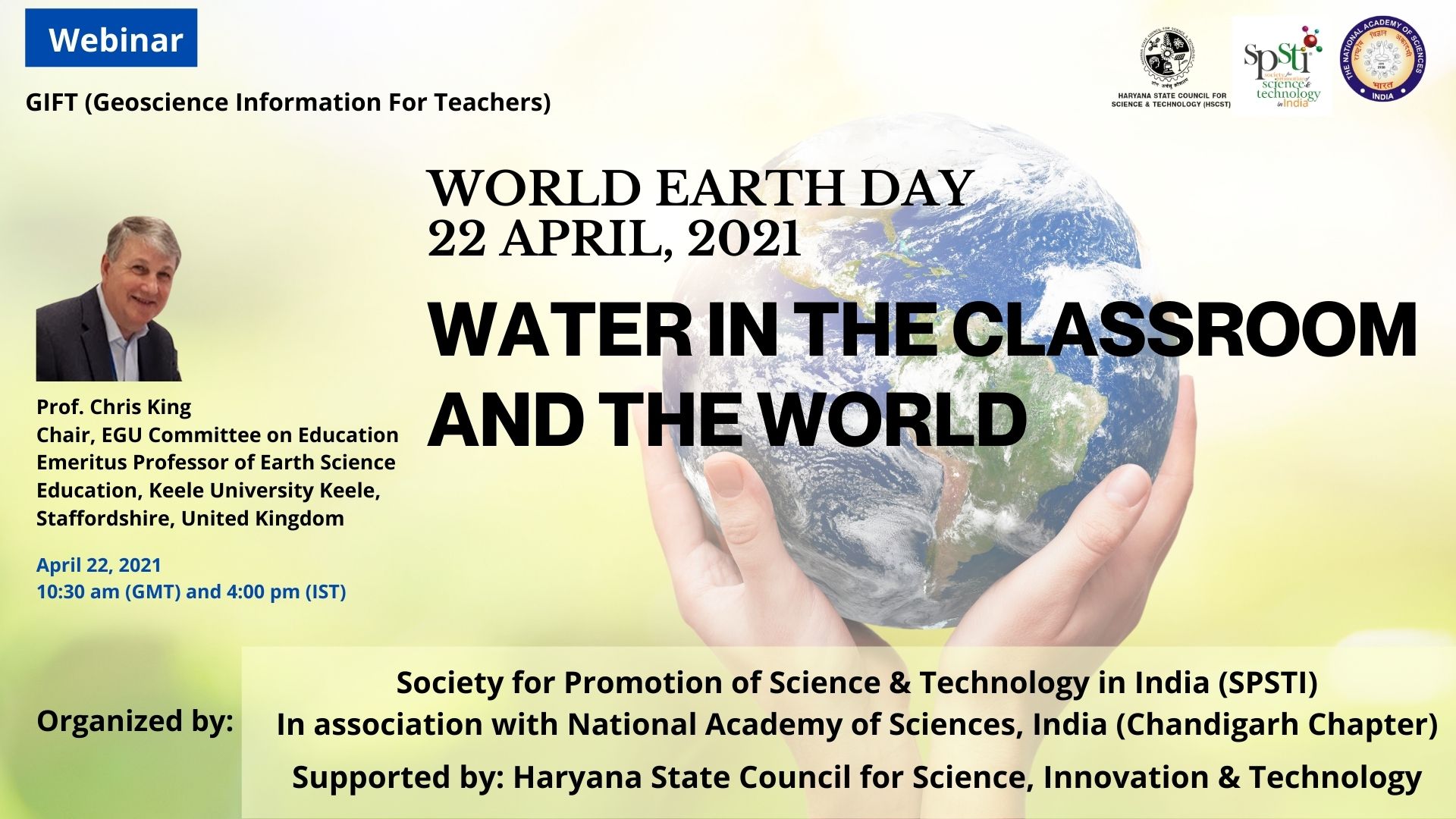The Society for Promotion of Science & Technology in India (SPSTI) in association with Chandigarh Chapter of National Academy of Sciences, India (NASI) jointly conducted a webinar on “Water in the Classroom and the World”. The webinar was organized to popularize the theme “Restore the Planet Earth” of the World Earth Day 2021 and was supported by Haryana State Council for Science, Innovation & Technology, Govt. of Haryana.
The speaker was Prof. Chris King, the Chair, EGU Committee on Education, Emeritus Professor of Earth Science Education, Keele University Keele, United Kingdom.
Prof. Arun K. Grover, former Vice Chancellor of Panjab University, Chandigarh welcomed the speaker and mentioned the various activities conducted by the SPSTI. Prof R. Baskar introduced the speaker.
Prof. King lectured focused on hands on water Earth learning ideas which included teaching about the earth, where children can be trained to use thinking skills to deal with the earth problems. He talked about CASE approach (Cognitive Acceleration through Science Education), a program to teach thinking skills, which is based on the work of educational psychologist Piaget and Vygotsky. The CASE programme included concrete preparation (teacher prepare the ground), construction (students collect the data from investigation and find pattern), cognitive conflict (new data that does not fit into the pattern), metacognition (think about thinking through discussion) and bridging (applying new understanding to the conflicts). He also shared data where use of CASE approach showed improvement in students. He further shared three Earth learning ideas using the CASE approach to develop thinking skills. First was atmosphere and ocean in the tank, where he explained the concept of atmospheric current, ocean surface and deep currents, avalanche, pyroclastic flow and nuclear explosion base surge due to temperature difference in the water and air. Second, he explained with the CASE approach the movement of sand in meandering rivers, asymmetrical ripples in sand helps to understand which way current flows and symmetrical ripples in sand forms if there are waves. Finally, through third CASE approach he explained about rain, spring and groundwater. He explained about groundwater, water table and springs through a model of how the earth works. He further explained through the same experiment how landfills at any depth are harmful and only way is to have landfills is with impervious rocks.

